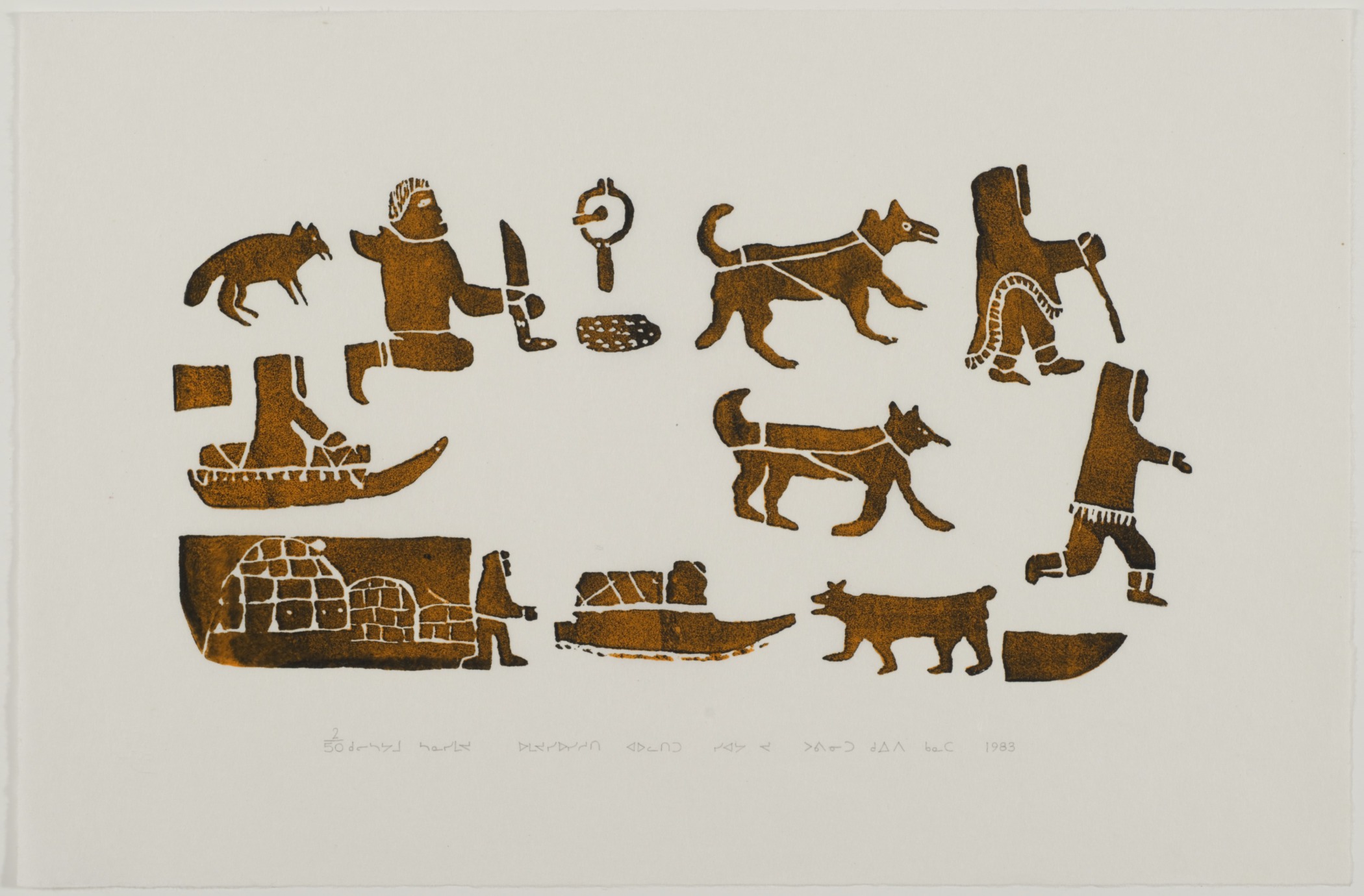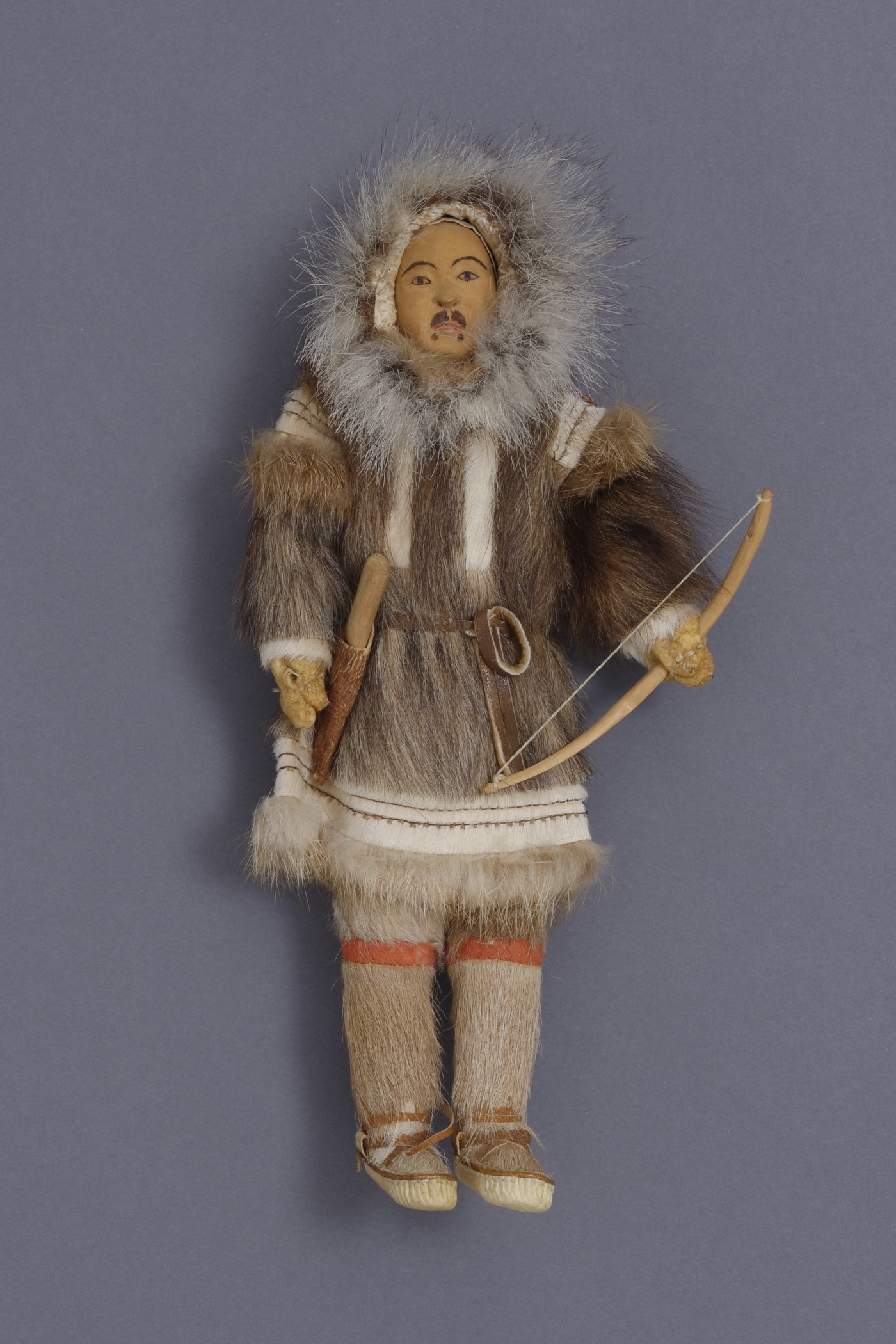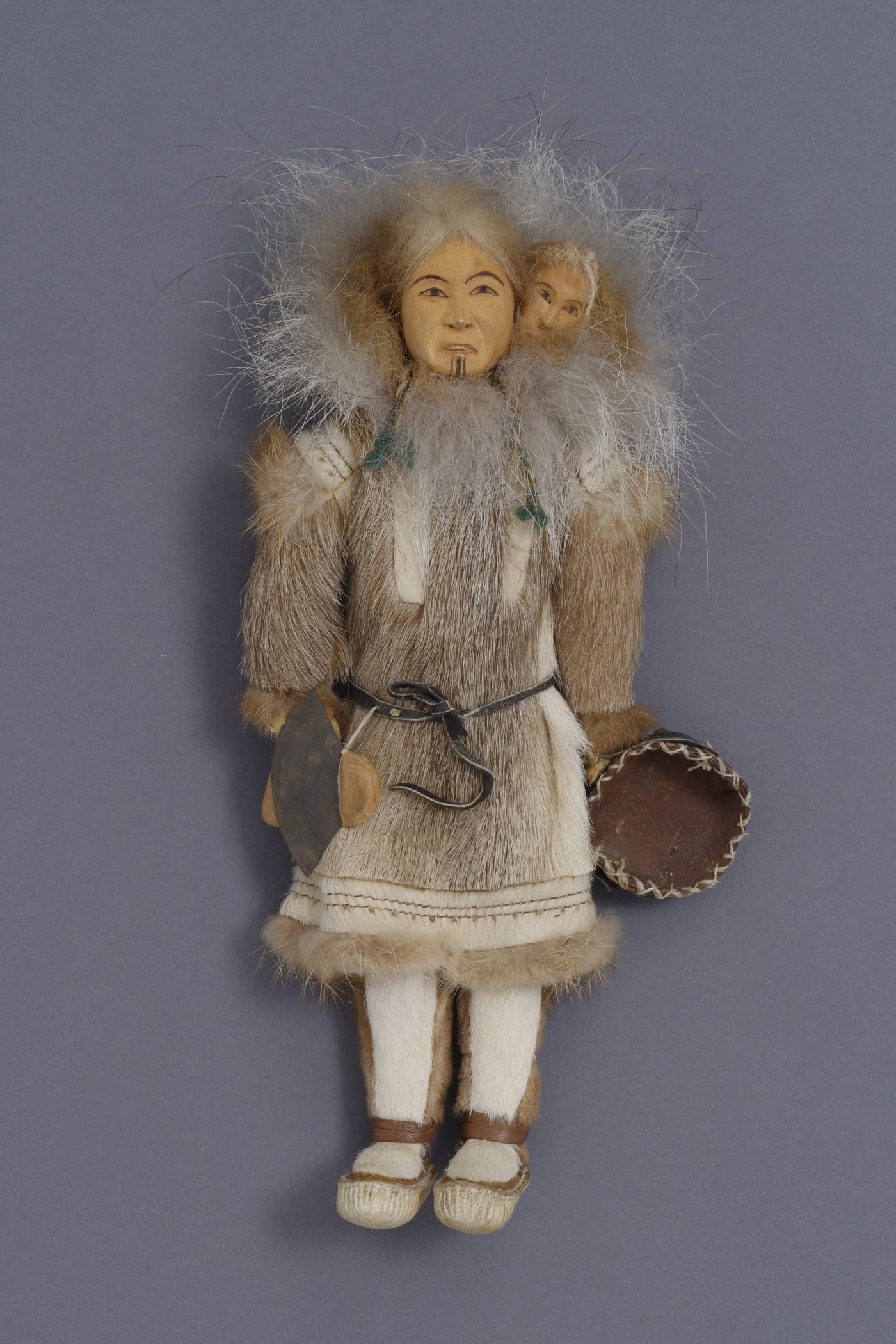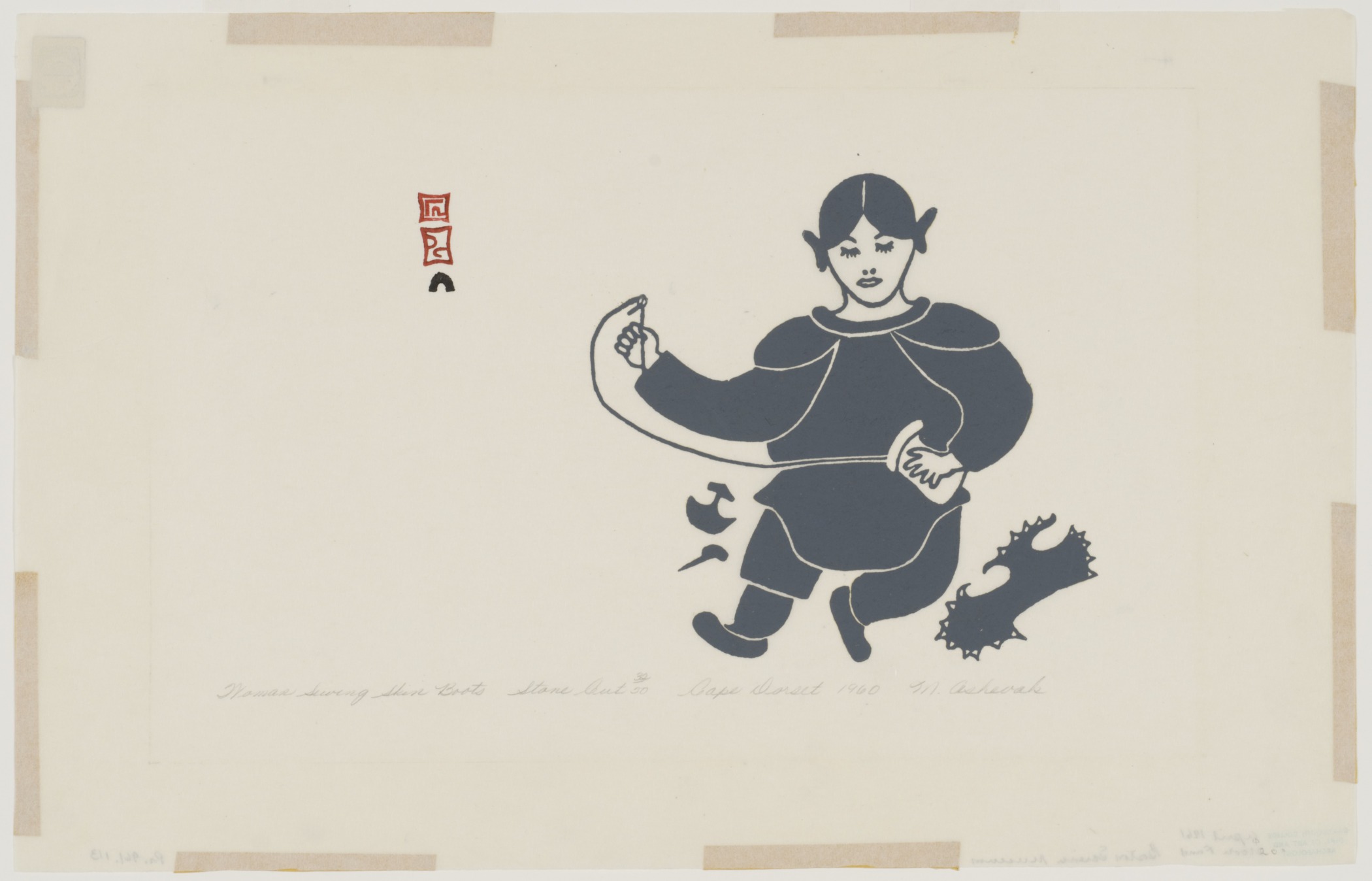Effie Richards, American (Iñupiaq), born 1893
Doll representing an Iñupiaq man with a bow and hunting knife
- Collected by 1954
- Wood, fur, and hide
Hood Museum of Art, Dartmouth College: The Wellington Indian Doll Collection, Gift of Barbara Wellington Wells; 987.35.26716
visibilityLook & DiscussAlthough this doll was made for sale, boys historically received dolls as well as miniature tools to play with to encourage them to prepare for their roles as adults.
explore the object
This doll is wearing the traditional winter dress of an Iñupiaq man: boots, leggings, a hooded parka, and mittens. His clothing is made from a variety of furs and hides. Richards decorated the clothing by varying the colors of the fur to create patterns, embellishing the hem and shoulder panels with fabric trim, and trimming the tops of the boots with red flannel. The parka is probably made of caribou hide. The white fur came from the underbelly of the caribou, and the darker fur from the upper part of the body. (See Clothing and Regalia to view similar forms of winter clothing.) The doll’s head is made of wood. It has a delicately drawn, realistic face.
Iñupiaq, undecorated bow, used to hunt birds, collected 1905. Wood and hide, length: 18 5/8 in. Hood Museum of Art, Dartmouth College: Bequest of Frank C. and Clara G. Churchill; 46.17.9618.
Richards’s male doll carries a bow in one hand, like this bow in the museum’s collection, and wears a sheathed knife on his hip.
Iñupiaq, seal drag with a carved and engraved handle depicting a seal, collected 1905. Ivory and rawhide, 4 1/8 × 13/16 × 9/16 in. Hood Museum of Art, Dartmouth College: Bequest of Frank C. and Clara G. Churchill; 46.17.9651.
He has a seal drag, or tool for pulling a hunted seal across the ice, tucked into his belt.
On his back he wears a type of backpack for carrying food and water while on the hunt. These tools emphasize his role as a hunter and provider for his family and community.
Meet the Artist
Effie Richards was a skilled “skin sewer,” who along with her sister, Ethel Washington, used her talents to make and sell dolls. Washington popularized a type of doll known as a “portrait-style” doll. She carved the heads of her dolls out of wood collected from the nearby Kobuk River, adding realistic faces. In this, she broke with tradition, because carving was traditionally male work. Washington was the first doll maker whose name became known to non-indigenous buyers. Her success in the 1950s inspired other doll makers in the settlement of Kozebue, including her sister, Effie. These examples made by Effie Richards embody many elements of Washington's dolls, including the types of accessories: a bow and a sheathed knife for the male doll, and a bowl and ulu for the female doll.
learn more
Watch this short video to learn about how groups in the Arctic used toys and sports to develop strength and agility in young men.
<embed Video 3>




